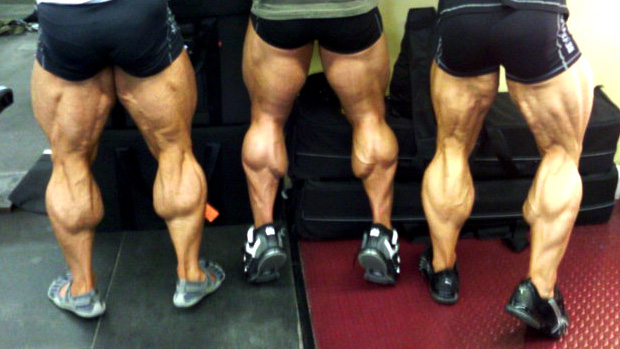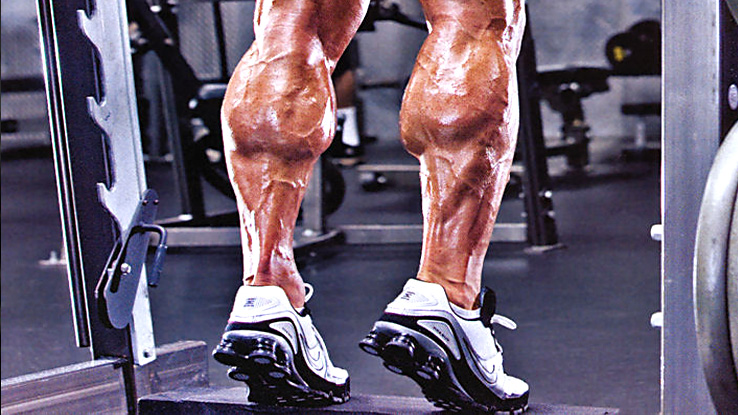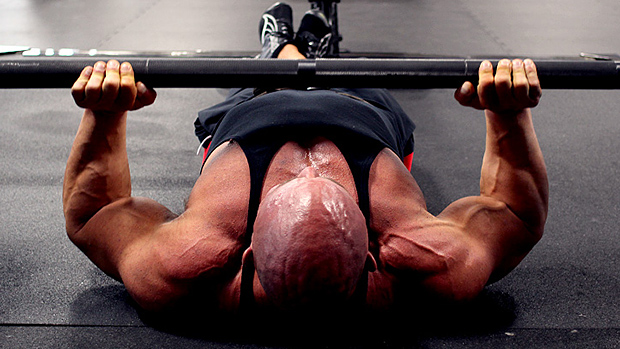What Are Cheat Reps?
First, let's define the two types of cheat reps:
- Extended Set Cheat: When reps are performed as strictly as possible before additional muscles or momentum take the set beyond failure. A good example of this is a standard dumbbell curl to failure, followed by reps performed with some knee-bend and body english.
- Heavy Cheat: When form is "loosened up" a bit to lift a heavier weight than normal throughout the set. An example is using the legs and shoulders when doing barbell rows.

Some of the biggest physiques on the planet, like Ronnie Coleman's, were built using momentum to lift heavy weights. Conversely, Dorian Yates used perfect form on just about everything he did. So who's right?
First, never use an extreme example like a pro bodybuilder to form your opinion. To answer this question, you have to look at three factors.
1. Training Age
How long have you been training? Follow the "get the most out of the least" rule. It applies to nearly everything in bodybuilding. It means that you should suck all the benefit out of each step in the process before advancing to the next step.
For example, let's say you start a diet. You immediately go to zero carbs, add daily fasted cardio, increase your training volume, and start pounding fat burners. Is this wise? No, it's not. Once your progress stalls, what's the next step? You can't cut more carbs or start running marathons at night.
So why would a person that's not experienced with weight training immediately jump to cheat reps to get beyond failure? The answer is, they shouldn't. This is when you're developing your training habits, and focus should be on learning perfect form, not finding ways to undermine this. Less experienced lifters will grow without ever going to failure, so why not save this step for later on down the road? If you haven't trained steadily for 2-3 years straight and aren't able to use perfect form, don't even consider this technique.
2. Injury History
Cheat reps can easily put your tendons and ligaments at risk. If you've had a history of injury to your lower back when deadlifting, is it wise to bounce the bar off of the pins just to keep the reps going past what you could normally do? Nope. You won't be able to enjoy one of the best things in life, training hard, if you're always hurt. Many times only a slight slip in form can result in serious injury.
3. Exercise Choice
This is the number one factor. Certain exercises lend themselves better to cheating than others. Here are some of my favorite exercises, grouped according to how well they work with cheat form.
| Muscle Group | Exercises |
|---|---|
| Shoulders | Rear Delt Raise/Hang and Swing |
| If you're doing these lying face down on a bench, you swing the weight, don't focus on flexing. These cheat reps will destroy your rear delts with no chance of injury. | |
| Lateral Raise | |
| Great exercise for cheating. Get strict reps, then swing the weight up a little, or even use some body English to do heavier sets altogether! | |
| Arms | Dumbbell Curl |
| Use a tad bit of momentum to push beyond failure. | |
| Triceps Pushdown | |
| Use your pecs and lats a little to extend the set past failure. | |
| Legs | Leg Press |
| Put your hands on your knees and grind out a few extra reps! |
| Muscle Group | Exercises |
|---|---|
| Back | Dumbbell Row |
| Going to failure and then using some momentum to keep going works well for many, as does using looser form to move heavier weight. | |
| Meadows Row | |
| I'm okay with using some cheating on these as the lower back is supported, and using heavy weight will intensify the stretch. | |
| Low Cable Row | |
| Some momentum coming out of the stretched position isn't bad on occasion. | |
| Lat Pulldown | |
| These are relatively safe to use cheating form on, and moderately effective. | |
| Shoulders | Overhead Press |
| As long as you're wearing a belt and using the legs to generate momentum, such as a push press. I'm not a fan of bouncing the bar off the chest or anything else. | |
| Arms | Barbell Curl |
| I'd give these 3 squat racks but I've seen people mess up their lower backs doing cheat curls. |
| Muscle Group | Exercises |
|---|---|
| Back | Deadlift |
| Bouncing off pins on the floor – SOME people can get away with this. I would not advise it. | |
| Barbell Row | |
| I know many like to loosen up their form to go heavy on these. I'm not one of them. Too much potential for lower back injury. | |
| Shrug | |
| Cheating on these isn't that dangerous, but it's not particularly effective for the traps, either. | |
| Legs | Standing Calf Raise |
| Bouncing a few reps to add some intensity after you've hit failure is okay. |
| Muscle Group | Exercises |
|---|---|
| Chest | Barbell Bench Press |
| Arch your back or bounce the weight off your chest? Not good. | |
| Flye | |
| Bouncing out of the bottom of a flye? Not good. But you CAN just continue the set by turning it into a dumbbell press. | |
| Legs | Squat |
| Bouncing out of the bottom as fast as you can? Please don't. | |
| Hack Squat | |
| Bouncing out of the bottom of these? Lord have mercy. | |
| Leg Curl/Stiff-legged Deadlift | |
| Too much risk of a hamstring tear or strain. | |
| Seated Calf Raise | |
| Too easy to get injured. | |
| Shoulders | Upright Row |
| Even the strict versions aren't safe. Cheating makes them even worse. | |
| Arms | Preacher Curl |
| Bouncing out of the bottom is not a good idea. | |
| Parallel Bar Dip | |
| Bouncing out of the bottom on these = Goodbye elbows. | |
| Lying Extension/Skullcrusher | |
| Just too hard on the elbows. | |
| Back | Chin-Up |
| Seeing people round their backs and do the herky-jerky thing to get their chin over the bar is a huge peeve of mine. | |
| Dumbbell Pullover | |
| Looking to tear up your shoulders and rotator cuff? Then swing the weight back on these. |

Don't use "extended cheat reps" for more than 1 to 2 sets per body part during a workout. The majority, over 90% of your sets, should be done strictly.
Don't use "heavy cheaters" for more than 1-2 sets per body part. Use these as a supplement to forced reps, drop sets, and other high intensity techniques that are safer, and can be done with good form.
The vast majority of trainees can make solid, consistent gains using textbook exercise form 90% of the time. Granted, there are contexts where a little extra "oomf" is required to push past a plateau, but those cases are the exception, not the rule.
Cheat reps are overused, which is unfortunate as they're a second-class substitute for more intelligent programming tweaks like drop sets or the occasional forced rep (done with perfect form). They can however, be used with caution to add intensity on occasion, if you pick the right exercise.





